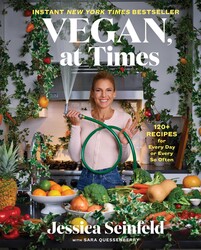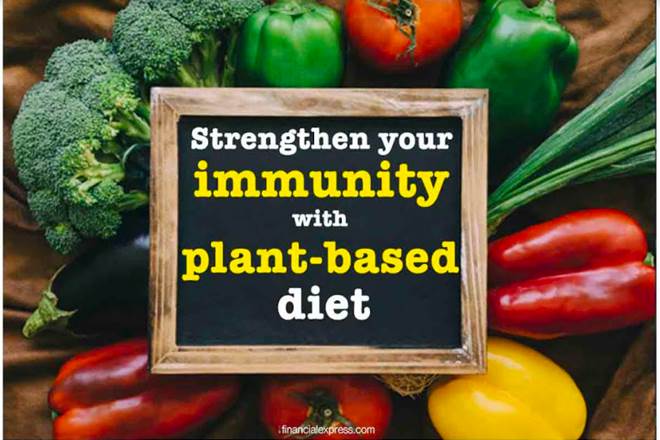
Chickpeas contain a lot of nutrients and are low in fat. They also have a high level of protein and fiber. You can use them to add taste and texture to many dishes including pasta, soups and stews. They can be added to a wide range of desserts and snacks for a delicious vegetarian treat.
Here are 21 of the best vegetarian recipes. From a classic chickpea hummus to vegan chocolate hummus, the recipes below have it all!
Middle Eastern Chickpea stew in one pot: This simple, wholesome dish is vegan and gluten-free. Serve this stew over quinoa rice or basmati for a plant-based, filling meal.
Vegetarian Frittata - Easy and Healthy: This healthy vegetarian frittata can be made in a few minutes and is full of protein. It's topped off with fresh vegetables and served with an energizing lemon-parsley vinegaraigrette. This is also a great appetizer or snack when served with toasted bread.
Mashed Chickpeas - This is an easy and delicious vegan substitute for tuna. Simply add a can chickpeas to water and blend.

Roasted Chickpeas. These crispy, roasted, and salted snackable chickpeas will make your lunchbox a protein-rich and nut free staple. Also, you can sprinkle them on your salad to add a little extra crunch. They are also high in protein.
Chickpeas with Chili and Spice in the Air Fryer are a light, crunchy way to add a little spice to your soups or grains. They also make a delicious salad topping. They're an easy, healthy, and convenient snack that will be a hit with kids and adults alike!
Healthy Hummus: A creamy, smoky and lemony hummus that only requires a few simple ingredients is a healthy and easy snack. This delicious dip pairs perfectly with pita chips or vegetables.
Dark Chocolate Hummus: This chocolate-y, healthy hummus is a fun twist on the classic, featuring cocoa powder and maple syrup. It's perfect for breakfast or dessert.
Chickpea Salad with Chipotle Cilantro and Spicy Chipotle: On a busy day, this chickpea recipe is a great way to get plenty of vegetables. This is a quick and easy vegetarian dish that can be made in less than 20 minutes.
Vegan Caesar Salad: The secret lies in the base. This quick and easy recipe replaces parmesan, mayo, and anchovies with a delicious and satisfying hummus that's packed with protein and healthy fats.

Chickpeas are used to make a creamy, rich sauce for this vegan version of a classic Mexican dish. You can also add it to tortilla wraps and enjoy a vegetarian meal on the run!
Oven-Roasted Green Salad: This tangy and refreshing Mediterranean-inspired green salad is a healthy, plant-based recipe that's easy to make. It has a light vinaigrette of lemon and parsley that is both tart, fresh, and healthy.
Hot Honey Chickpea Bowls. These vegan, sweet-and-savory salads have a spicy honey sauce which is perfect to top your vegetables! These salads are also a great way to sneak in more fruit and veggies into your diet!
FAQ
What are the 7 tips to have a healthy life?
-
Make sure you eat right
-
Exercise regularly
-
Good sleep
-
Drink plenty of water.
-
Get adequate sleep
-
Be happy
-
Smile often
What can you do to boost your immune system?
The human body consists of trillions of cells. These cells combine to form organs or tissues that serve specific functions. When one cell dies, another cell replaces it. Cells communicate with one another using chemical signals called hormonal hormones. Hormones regulate all bodily processes, from growth and development to metabolism and immunity.
Hormones refer to chemicals secreted in glands throughout the body. They are chemicals that travel through the bloodstream and function as messengers to control how our bodies work. Some hormones come from the body and others are produced outside.
The hormone-producing glands release their contents into bloodstream. This is when hormone production starts. Once hormones become active, they move throughout the body until reaching their target organ. In some cases hormones can remain active for a very short time. Other hormones remain active longer and still have an influence on the body's functioning long after they leave bloodstream.
Some hormones can be produced in large amounts. Others are only produced in very small quantities.
Some hormones only are produced during certain periods of life. For example, estrogen is made during puberty. Estrogen assists women with breast development, bone density, and osteoporosis prevention. It is also known to promote hair growth and keep skin soft and smooth.
How do I count calories?
It is possible to wonder "what the best diet is for me?" or "is counting calories necessary?" The answer is dependent on many factors like your current state of health, your personal goals, how you prefer to eat, and your overall lifestyle.
The Best Diet For Me - Which One Is Right For You?
The best diet for me depends on my current health status, my personal goals, my preferences, and my overall lifestyle. There are many good and bad diets. Some diets work for some people, while others are not. What should I do then? How can I make the right choice?
These are the main questions addressed by this article. It begins with an overview of the different diets today. The pros and cons of each diet are then discussed. Then, we will discuss which diet is the best.
Let's first take a look at different diets.
Diet Types
There are three main types. Low fat, high protein, or ketogenic. Let's discuss them briefly below.
Low Fat Diets
A low-fat diet is a diet that reduces the amount fats consumed. This is done by reducing your intake of saturated oils (butter and cream cheese, etc.). These fats can be replaced with unsaturated fats like avocados and olive oil. Low fat diets are often recommended to those who wish to lose weight quickly. However, this kind of diet may cause problems such as constipation, heartburn, and indigestion. In addition, it may lead to vitamin deficiencies if a person doesn't get enough vitamins from their food.
High Protein Diets
High-protein diets limit carbohydrates and favor proteins. These diets are more protein-rich than others. These diets are intended to increase muscle mass and reduce calories. Unfortunately, they can't provide adequate nutrition for those who eat regularly. They may also be too restrictive and not suitable for everyone.
Ketogenic Diets
Ketogenic diets are also known as keto diets. They are high on fat but low in carbs and proteins. They are popularly used by bodybuilders, athletes, and others who want to be able to train harder and more efficiently without becoming tired. However, they must be used with caution to avoid nausea, headaches and fatigue.
What is the difference of a virus from a bacteria?
A virus is a microscopic organism that cannot reproduce outside its host cell. A bacterium is a single-celled organism that reproduces by splitting itself in two. Viruses measure only 20 nanometers in diameter, but bacteria is up to 1 millimeter in size.
Viruses are spread via contact with infected bodily liquids such as urine, saliva, semen and vaginal secretions. Bacteria can be spread by direct contact with infected objects and surfaces.
Viruses can enter our bodies through cuts, scrapes, bites, or other breaks in the skin. They can also enter the body through the nose and mouth, eyes, ears or rectum.
Bacteria can enter the body through cuts, scrapes burns and other injuries to the skin. They can also get into our bodies via food, water or soil.
Both viruses and bacteria can cause illness. But viruses can't multiply within their host. They can only infect living cells and cause illness.
Bacteria can multiply within their hosts and cause illness. They can spread to other parts of our bodies. To kill them, we must use antibiotics.
What is the difference in fat and sugar?
Fat is an important energy source, which comes from food. Sugar is naturally found in fruits and veggies. Both fats as well as sugars contain the same amount of calories. Fats have twice the calories of sugars, however.
Fats are stored in your body and can cause obesity. They cause cholesterol buildup in arteries which may lead to heart attacks and strokes.
Sugars are quickly absorbed and provide instant energy. This causes blood glucose levels rise. High blood sugar levels can cause type II diabetes.
Statistics
- WHO recommends consuming less than 5% of total energy intake for additional health benefits. (who.int)
- This article received 11 testimonials and 86% of readers who voted found it helpful, earning it our reader-approved status. (wikihow.com)
- The Dietary Guidelines for Americans recommend keeping added sugar intake below 10% of your daily calorie intake, while the World Health Organization recommends slashing added sugars to 5% or less of your daily calories for optimal health (59Trusted (healthline.com)
- nutrients.[17]X Research sourceWhole grains to try include: 100% whole wheat pasta and bread, brown rice, whole grain oats, farro, millet, quinoa, and barley. (wikihow.com)
External Links
How To
What does the word "vitamin" mean?
Vitamins are organic compounds naturally found in food. Vitamins aid us in absorbing nutrients from the food we eat. Vitamins cannot be made by the body; they must be taken from food.
There are two types: water-soluble and fat-soluble vitamins. Water-soluble vitamins dissolve in water easily. These include vitamin C (thiamine), Vitamin B1 (riboflavin), Vitamin B2 (riboflavin), Vitamin B3 (niacin), Vitamin B6 (pyridoxine), Vitamin C, B1 (thiamine), Vitamin B2 (riboflavin), Vitamin B3 (niacin), and Vitamin B6 (pyridoxine). Fat-soluble vitamins are stored within the liver and in fatty tissue. Vitamin D, E, K and A are some examples.
Vitamins are classified based on their biological activity. There are eight major types of vitamins.
-
A - essential for normal growth and maintenance of health.
-
C - essential for proper nerve function, and energy production.
-
D - essential for healthy teeth and bones.
-
E is needed for good reproduction and vision.
-
K - Essential for healthy muscles and nerves.
-
P – Vital for building strong bones.
-
Q - aids digestion and absorption of iron.
-
R is required for the production of red blood cells.
The recommended daily allowance (RDA), for vitamins, varies based on gender, age, and physical condition. The U.S. Food and Drug Administration has established the RDA values.
For adults over 19 years, the RDA is 400 mg per day for vitamin A. However, pregnant women need 600 micrograms per day because it is important for fetal development. Children ages 1-8 require 900 micrograms per day. Infants under one year of age require 700 micrograms per day, but this amount decreases to 500 micrograms per day between 9 months and 12 months of age.
Children aged 1-18 years need 800 micrograms daily, while children overweight require 1000 micrograms per days. Children who are severely obese or underweight will need 1200 micrograms each day.
Children ages 4-8 years who have been diagnosed with anemia need 2200 micrograms per day of vitamin C.
Adults over 50 years of age need 2000 micrograms per day for general health. Due to their increased nutrient needs, pregnant and breastfeeding women need 3000 micrograms daily.
1500 micrograms is the recommended daily intake for adults aged 70+, as they lose 10% of their muscle every ten years.
Women who are pregnant or lactating need more than the RDA. Pregnant mothers need 4000 micrograms per daily during pregnancy and 2500 after giving birth. Breastfeeding mothers need 5000 mg per day when breastmilk is being produced.